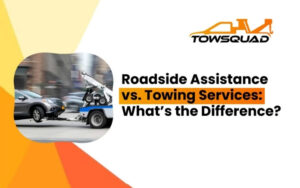Car batteries can fail unexpectedly, leaving you stranded and frustrated. Knowing how to jump-start an auto car is an essential skill for any driver. This guide will walk you through the process, ensuring you’re prepared to handle a dead battery safely and effectively.
What You’ll Need
- Jumper cables
- Another vehicle with a charged battery
- Optional: A portable jump starter
Step-by-Step Instructions to Jump Start an Auto Car
Step 1: Safety First
- Ensure both vehicles are turned off.
- Position the vehicles close enough for the jumper cables to reach, but make sure they’re not touching.
- Engage the parking brakes and set both cars in “Park” (P).
Step 2: Connect the Jumper Cables
- Open the hoods of both vehicles and locate the batteries.
- Identify the positive (+) and negative (-) terminals on both batteries.
- Attach one end of the red jumper cable to the positive terminal of the dead battery.
- Attach the other end of the red jumper cable to the positive terminal of the charged battery.
- Attach one end of the black jumper cable to the negative terminal of the charged battery.
- Attach the other end of the black jumper cable to an unpainted metal surface (like a bolt or engine block) on the car with the dead battery. Avoid connecting it to the negative terminal of the dead battery to prevent sparks.
Step 3: Start the Working Vehicle
- Start the car with the charged battery and let it run for 3-5 minutes to transfer power to the dead battery.
Step 4: Start the Dead Vehicle
- Attempt to start the car with the dead battery. If it doesn’t start immediately, wait a few more minutes while the other car continues to run.
Step 5: Disconnect the Jumper Cables
- Once the dead car starts, carefully remove the jumper cables in reverse order:
- Black cable from the unpainted metal surface.
- Black cable from the charged battery.
- Red cable from the charged battery.
- Red cable from the dead battery.
Step 6: Let the Jump-Started Car Run
- Keep the engine running for at least 15-30 minutes to allow the alternator to recharge the battery.
Tips for Jump-Starting an Auto Car
- Double-check connections: Ensure the cables are securely connected to the correct terminals.
- Use safety gear: Gloves and safety glasses can protect you from sparks.
- Be prepared: Carry jumper cables or invest in a portable jump starter for emergencies.
- Consult your manual: Some modern cars may have specific jump-starting instructions.
When Jump Starting Doesn’t Work
If your car doesn’t start after multiple attempts, the issue may not be the battery. Common problems include a faulty alternator, starter motor, or a completely drained battery. In such cases, it’s best to contact a TowSquad professional roadside assistance service for help.
Conclusion
Jump-starting an auto car can seem daunting, but with the right tools and knowledge, it’s a manageable task. Always prioritize safety and follow the steps carefully to avoid damaging your vehicle. By being prepared, you can turn a stressful situation into a quick fix and get back on the road in no time.


